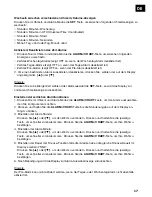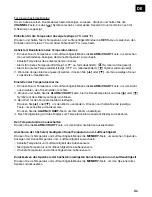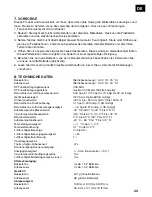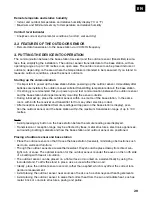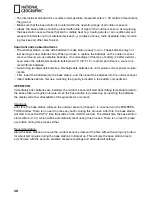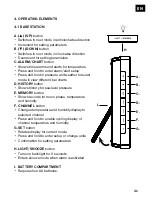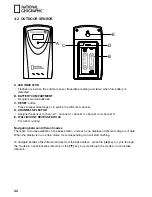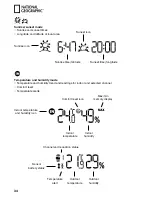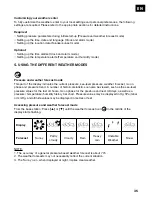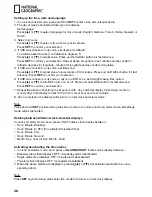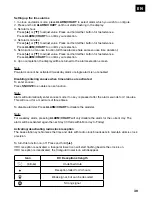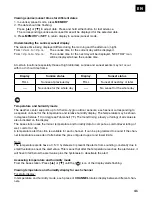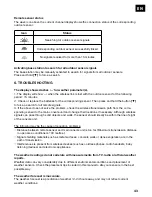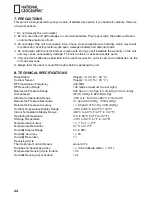
29
EN
Remote temperate and relative humidity
• Indoor and outdoor temperature and relative humidity display (ºC or ºF)
• Maximum and Minimum memory for temperature and relative humidity
Comfort level indicator
• Analyzes current environmental conditions (comfort, wet and dry)
2.2 FEATURES OF THE OUTDOOR SENSOR
• Remote data transmission to the base station via 433 MHz frequency
3. PUTTING THE DEVICE INTO OPERATION
The communication between the base station (receiver) and the outdoor sensor (transmitter) is wire-
less, thus simplifying the installation. The outdoor sensor transmits data to the base station, with an
operating range of up to 100 metres in an open area. The outdoor sensor can be placed indoors or
outdoors, depending on the area where the temperature is intended to be measured. If you intend to
measure outdoor conditions, place the sensor outdoors.
Starting up the communication
• It is important to power up the base station before powering up the outdoor sensor. Immediately after
batteries are installed, the outdoor sensor will start transmitting temperature data to the base station.
• It is strongly recommended that you power up and test communication between the outdoor sensor
and the base station before permanently mounting the sensor outside.
• During initial set up, place the outdoor sensor within one metre of the base station, in the same
room, with both the receiver and transmitter far from any other electric product.
• After reception is established (remote readings will appear on the base station’s display), posi-
tion the outdoor sensor and the base station within the maximum transmission range of up to 100
metres.
Note:
• Avoid pressing any button on the base station before the remote readings are displayed.
• Transmission or reception range may be affected by trees, metal structures, electronic appliances,
surrounding building materials and how the base station and outdoor sensor are positioned.
Placing of outdoor sensor and base station
• Place the outdoor sensor so that it faces the base station (receiver), minimizing obstructions such
as doors, walls and furniture.
• Though the outdoor sensors are weather resistant, they should be placed away from direct sun-
light, rain or snow. The optimal location for the outdoor sensor is under the eaves on the north side
of a building with free air circulation.
• The outdoor sensor can be placed on a fl at surface or mounted on a wall vertically by using the
included stand. To affi x the stand in place, use a screw rather than a nail.
• Ideally, place the outdoor sensor over soil, rather than asphalt, which may affect the correct tem-
perature measurement.
• Avoid placing the outdoor sensor near sources of heat, such as chimneys and heating elements.
• Avoid placing the outdoor sensor in areas that collect heat from the sun and radiate heat, such as
metal, brick or concrete structures, paving and patios.



